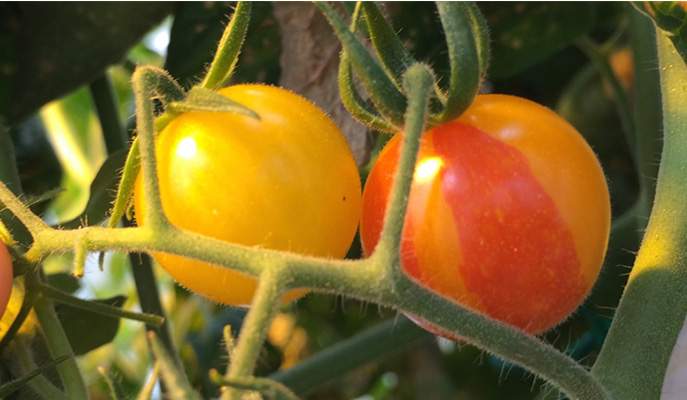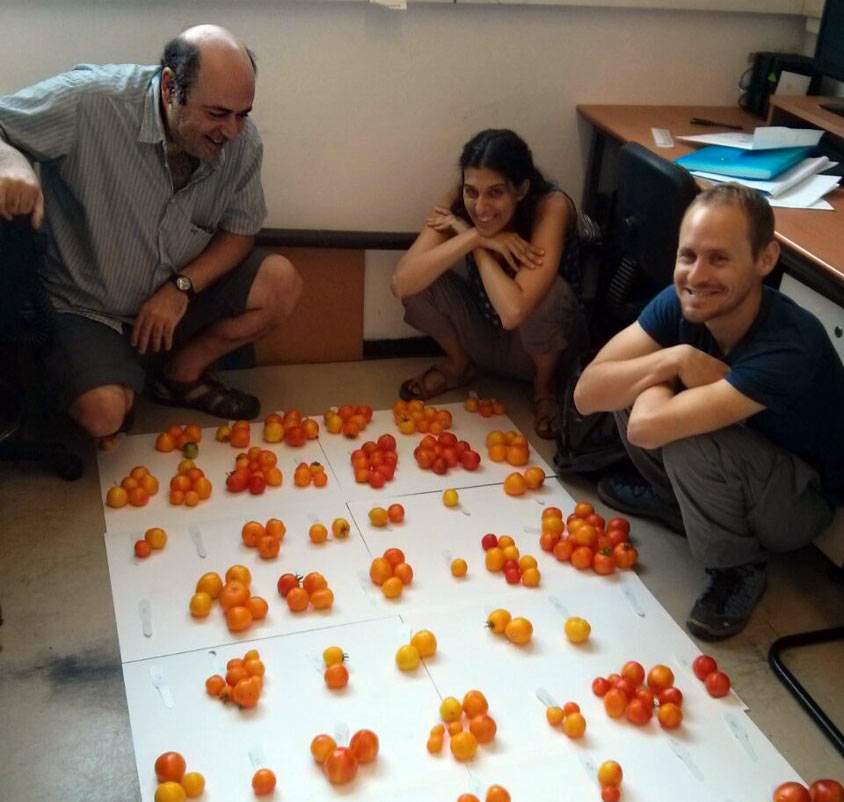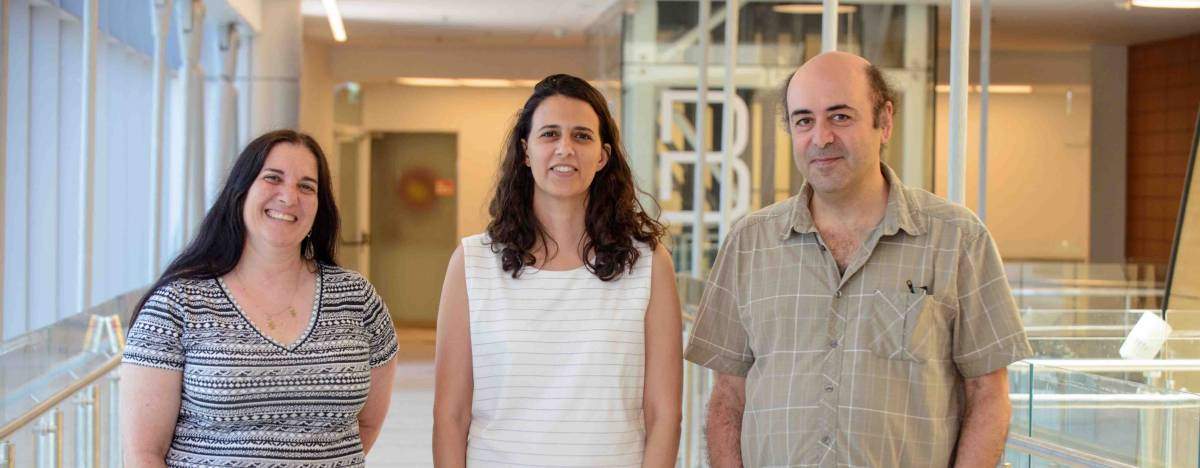Are you a journalist? Please sign up here for our press releases
Subscribe to our monthly newsletter:

Fruit and vegetables all too often look better than they taste. Wouldn’t it be ideal if plant breeders could create produce that is both gorgeous and tasty? Weizmann Institute of Science researchers have shown that such breeding can be achieved with great precision by creating targeted breaks in the plant’s DNA.
“This method makes it possible not just to edit, but to rewrite a plant’s genome so as to mix and match, on demand, various properties from its two parents, including taste, size, yield and resistance to disease,” says Prof. Avraham Levy of Weizmann’s Plant and Environmental Sciences Department, who conducted the study with Ph.D. student Shdema Filler Hayut and senior staff scientist Dr. Cathy Melamed Bessudo.
Entire genomes of such major crops as tomato, wheat and banana have already been sequenced, but when plant breeders use this knowledge to manipulate these genomes, the results are still for the most part random and unpredictable. Breeders have long dreamed of altering the plant’s genome in a more controlled manner, and of selecting traits from a few relevant plants only, rather than the thousands needed with the current genetic technologies. This might now become possible by inducing DNA breaks at specific locations and harnessing the plant’s own repair mechanisms.
Breeders have long dreamed of altering the plant’s genome in a more controlled manner
When both DNA strands are broken, repair enzymes often try to fix the damage by fusing the broken ends back together. But there is another repair pathway, called homologous recombination, which takes advantage of the fact that chromosomes come in pairs, one from each of the plant’s parents. In this process, repair enzymes fill the gap in the damaged DNA molecule on one chromosome by copying a small, undamaged DNA segment from the second, homologous chromosome. And sometimes larger DNA segments are reshuffled between the damaged chromosome and its homolog. Even though homologous recombination always results in the transfer of DNA from one chromosome to another, until now no one had been able to rely on this process for transferring desired traits to a plant because it was unknown how frequently this kind of repair occurred and how it could be controlled.

As reported recently in Nature Communications, the Weizmann scientists invented a clever method for visually tracing DNA repair. They genetically manipulated the synthesis of the red pigment, lycopene, in tomatoes: Without this pigment, tomatoes are yellow.
In one crucial set of experiments, the researchers created hybrid tomato plants that had an intact copy of the gene called PSY1, which controls the biosynthesis of lycopene, on one chromosome only; the other chromosome had a mutated PSY1. With the help of CRISPR-Cas9 technology, which makes cuts at selected points in DNA with great precision, the researchers created double-strand breaks in the intact PSY1 copy. In subsequent generations, many of the tomatoes had yellow fruits because they didn’t have a single functioning PSY1 copy.
By analyzing these yellow fruits at the molecular level, the scientists were able to determine what kind of DNA repair had taken place. They found that in most cases, the double-strand break in PSY1 had been repaired by fusion of the two broken ends, but in 14% of the cases – a much higher rate than previously believed – the break had been repaired by homologous recombination, that is, by copying a mutated DNA segment from the undamaged chromosome to the broken one, to repair the break.
“Now that we’ve shown that intentionally induced homologous recombination occurs with such a high frequency, plant breeders can start taking advantage of this mechanism,” Levy says.

Filler Hayut explains: “Our results suggest that to obtain a desired trait or a combination of traits in a precise and targeted manner in a plant, it’s sufficient to choose the right parents, to cross them and to break the DNA in the genes of interest in the hybrid. One can then count on DNA repair to do the rest in subsequent generations – frequently copying the desired gene from the undamaged chromosome onto the broken one.”
The scientists had chosen to work with color because it helped them trace the repair process, but the approach can work for genes encoding any trait. “Creating the double-strand DNA breaks can help design plants with any number of traits, in any combination,” explains Melamed Bessudo.
One attractive feature of this approach is that even though the process itself involves genetic manipulation, the resultant plant is not genetically modified, which can help avoid restrictions imposed on modified produce. The transfer of DNA occurs by means of a natural repair mechanism, and the genetic elements that set this mechanism in motion can be removed from the progeny of the plants that undergo targeted modification.
Prof. Avraham Levy's research is supported by the Dr. Erhard, Emmi, and Fred Loewinsohn Center for Pediatric Health, which he heads; the Y. Leon Benoziyo Institute for Molecular Medicine, which he heads; the Tom and Sondra Rykoff Family Foundation Fund; the Leona M. and Harry B. Helmsley Charitable Trust; Dana and Yossie Hollander, Israel; and the European Research Council. Prof. Levy is the incumbent of the Gilbert de Botton Professorial Chair of Plant Sciences.